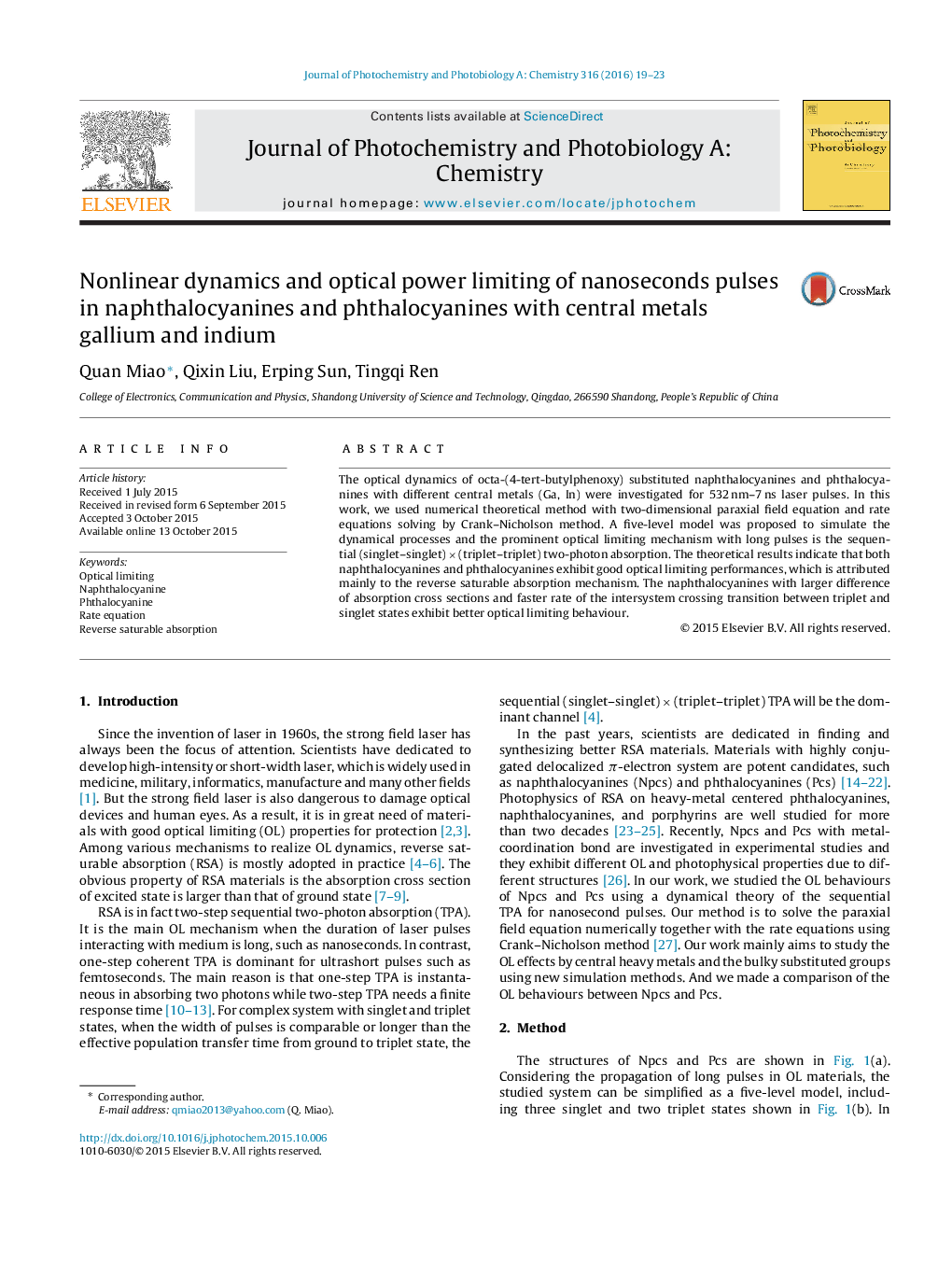| کد مقاله | کد نشریه | سال انتشار | مقاله انگلیسی | نسخه تمام متن |
|---|---|---|---|---|
| 26284 | 43944 | 2016 | 5 صفحه PDF | دانلود رایگان |
• We study the dynamical processes of nanoseconds lasers in naphthalocyanines and phthalocyanines.
• We provide theoretical evidences of the main mechanism of optical power limiting.
• The central metals play more important roles in the dynamical processes.
• The main reason is the central metals enhance the spin–orbit coupling.
The optical dynamics of octa-(4-tert-butylphenoxy) substituted naphthalocyanines and phthalocyanines with different central metals (Ga, In) were investigated for 532 nm–7 ns laser pulses. In this work, we used numerical theoretical method with two-dimensional paraxial field equation and rate equations solving by Crank–Nicholson method. A five-level model was proposed to simulate the dynamical processes and the prominent optical limiting mechanism with long pulses is the sequential (singlet–singlet) × (triplet–triplet) two-photon absorption. The theoretical results indicate that both naphthalocyanines and phthalocyanines exhibit good optical limiting performances, which is attributed mainly to the reverse saturable absorption mechanism. The naphthalocyanines with larger difference of absorption cross sections and faster rate of the intersystem crossing transition between triplet and singlet states exhibit better optical limiting behaviour.
Figure optionsDownload as PowerPoint slide
Journal: Journal of Photochemistry and Photobiology A: Chemistry - Volume 316, 1 February 2016, Pages 19–23
